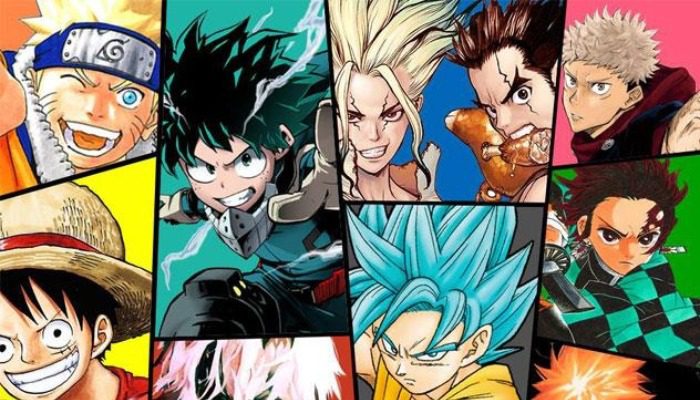“Demon Slayer: Kimetsu no Yaiba,” created by Koyoharu Gotouge, has captured the hearts of manga and anime fans worldwide with its compelling story and stunning visual artistry. Since its debut, the series has been acclaimed for its exceptional art style, intricate character designs, and captivating action sequences. This comprehensive review will delve into the artistic brilliance of “Demon Slayer,” examining its visual techniques, thematic elements, and overall impact on the manga and anime landscape. For readers interested in exploring more unique and artistically impressive manga and manhwa, zinmanga.net provides a plethora of options.
1. The Art Style: A Unique Blend of Tradition and Innovation


One of the most striking features of “Demon Slayer” is its distinctive art style, which blends traditional Japanese aesthetics with modern influences. The manga’s illustrations are characterized by their clean lines, detailed backgrounds, and vibrant use of color. Gotouge’s art captures the essence of historical Japan while incorporating fantastical elements that enhance the story’s magical and eerie atmosphere.
The series is renowned for its intricate depiction of the Breathing Techniques used by the demon slayers. Each technique is visually represented with unique, fluid patterns that symbolize different forms of combat. This artistic choice not only adds a dynamic quality to the action scenes but also reinforces the mystical nature of the character’s abilities. The use of sweeping, dramatic brushstrokes in these sequences evokes a sense of grandeur and intensity, making the battles both thrilling and visually stunning.
2. Character Designs: Depth and Detail
The character designs in “Demon Slayer” are meticulously crafted to reflect each character’s personality, background, and role within the story. Tanjiro Kamado, the protagonist, is depicted with a distinctive checkered haori and a gentle yet determined expression, capturing his journey from a simple boy to a fierce warrior. His sister, Nezuko, is characterized by her demon form and the striking bamboo muzzle, symbolizing her struggle between her human nature and demonic instincts.
The series also features a wide array of demon antagonists, each with unique and often grotesque designs that emphasize their malevolent nature. The intricate detailing of these characters, from their monstrous features to their expressive facial traits, enhances their role as formidable foes and adds depth to the story’s conflicts. The artistic portrayal of these demons contributes to the series’ atmospheric tension and horror elements.
3. Thematic Symbolism: Art as Narrative


“Demon Slayer” employs visual symbolism to enhance its narrative themes. The recurring motifs, such as the red and white colors associated with the demons, symbolize the clash between good and evil. Additionally, the use of natural elements like water, fire, and wind in the Breathing Techniques not only reflects the characters’ powers but also ties into the broader themes of harmony and balance within the natural world.
The series’ art also underscores the emotional and psychological aspects of the characters. For instance, the portrayal of Tanjiro’s sorrow and determination is often depicted through poignant imagery and symbolic backgrounds. These artistic choices deepen the reader’s connection to the characters and amplify the emotional impact of the story.
4. Influence on Manga and Anime
“Demon Slayer” has had a significant impact on both the manga and anime industries. The series’ success has inspired a new wave of manga creators to explore similar artistic styles and thematic elements. The anime adaptation, with its high-quality animation and faithful representation of Gotouge’s artwork, has further elevated the series’ popularity and brought its visual brilliance to an even wider audience.
The success of “Demon Slayer” also underscores the importance of artistry in storytelling. The series demonstrates how visual elements can enhance narrative depth, character development, and thematic resonance. This has set a high standard for future works in the genre and has influenced how manga and anime creators approach their art.
5. Comparisons and Recommendations
While “Demon Slayer” stands out for its artistic achievements, there are other manga and manhwa that also excel in visual storytelling. For those interested in exploring similar artistic styles or thematic elements, ZinManga offers a variety of options. Readers may find works that feature detailed artwork, dynamic action sequences, and profound thematic depth, akin to what is seen in “Demon Slayer.”
For example, the manhwa “Tower of God” features intricate character designs and a unique art style that blends traditional and modern influences, much like “Demon Slayer.” Additionally, “The Breaker” offers dynamic action sequences and detailed visual storytelling that will appeal to fans of Koyoharu Gotouge’s work.
Conclusion
The artistic brilliance of “Demon Slayer: Kimetsu no Yaiba” is evident in its masterful blend of traditional and modern art techniques, detailed character designs, and thematic symbolism. The series has set a high bar for visual storytelling in manga and anime, demonstrating how art can enhance narrative depth and emotional resonance. For readers seeking to explore more exceptional manga and manhwa with similar artistic qualities, ZinManga is a valuable resource that offers a wide range of options to suit various tastes and preferences. The impact of “Demon Slayer” on the manga and anime industry highlights the power of visual artistry in shaping memorable and impactful stories.
































